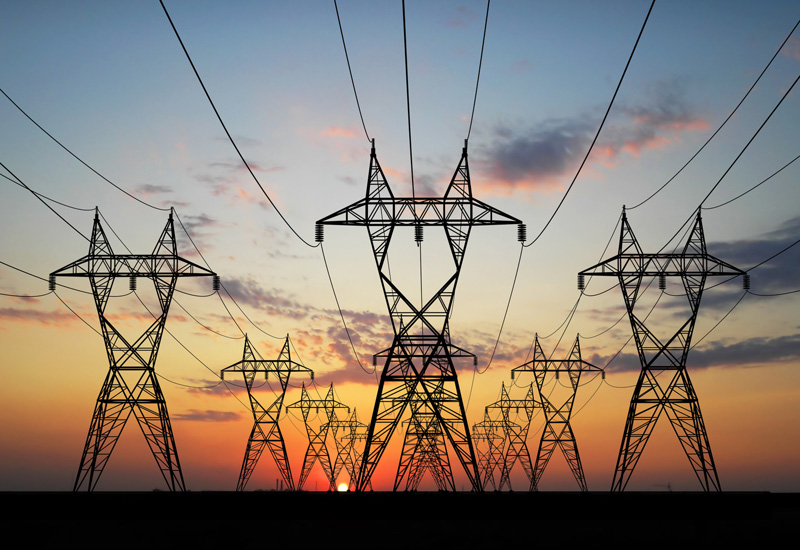Today we are at 8,000 megawatts with 5,000 megawatts on-grid and above 3,000 mega watts of industrial captive off-grid and we will leave an installed capacity of almost 22,000 megawatts
The Minister of Power, Abubakar Aliyu says that the President Muhammadu Buhari led administration will bequeath about 22,000 megawatts installed capacity of electricity by 2023.
He said this at the Presidential Score Card of the Ministry of Power in Abuja.
The programme is an annual event where the various ministries present their achievements to the media and the general public.
Aliyu said the adminstration had embarked on several transformational projects to bequeath an additional 4,000 megawatts generating capacity to existing megawatts.
He said as part of the plans to achieve the 4,000 additional megawatts, the 700 megawatts Zungeru Hydro Power Plant would be completed in the first quarter of 2023.
Aliyu said the administration would work toward operationalisation of the 240 megawatts Afam III and 300 megawatts Okpai Phase II among others.
“We will set the country on a stable path for 10,000 megawatts of supplied energy.
“Today we are at 8,000 megawatts with 5,000 megawatts on-grid and above 3,000 mega watts of industrial captive off-grid and we will leave an installed capacity of almost 22,000 megawatts,” he said.
According to the minister, there are ongoing programames with facilities and investments secured at more than three billion dollars to eliminate the gap between transmission capacity and supplied energy.
“The Hydropower component of the Kashimbilla Multipurpose Dam was designed and upgraded from six megawatts to 40 megawatts.
“This was in phase one of the evacuation infrastructure, covering 245km of 132kv transmission lines and three substations, connecting Takum, Wukari, Rafin Kada, Dounga and Yandev in Taraba and Benue States.
“The Phase two of the evacuation infrastructure is currently at 45 per cent completion level.
“This is covering 56km extension of the 132 kilovolt (kV) transmission line from Yandev to Makurdi and complete rehabilitation of the Yandev substation.
“Phase two of the evacuation infrastructure will lead to the electrification of 24 host communities, including Zaki-Biam, Anyi, Buruku, Birama, Bibi, Shibong, among others within Benue State,” he said.
Aliyu said his administration had changed the narrative of the sector from consumption spending on subsidies to real infrastructure spending.
He said a total of 105 Power Transformer projects were completed during the period 2015 to 2022, with a capacity of 6,216 Mega Volt Ampere ( MVA) to the grid.
“This is with 73 of the power transformers installed by TCN engineers in substations across the nation.”
Aliyu said “some of the completed Power Transformer and Substation projects are 150 MVA, 330 and 132 kilovolt (kV) Interbus Power Transformer at Ughelli, Delta IV Transmission Substation”.
“Also, there are 150MVA, 330 and 132kV Power Transformer at Ayade Transmission Substation, 2x150MVA 330 and 132 and 33kV Substation at Lafia, Nasarawa State.
“There is also the 2x60MVA 132 and 33kV Dawaki/Gwarinpa Substation which was recently completed in November 2022 under the Abuja Feeding Scheme.
“Others are 2x60MVA 132 and 33kV Gagarawa Substation, 2x60MVA 132 and 33kV Substation at Adiabor, 2x30MVA 132 and 33kV Yelwa Yauri, 1x30MVA 132 and 33kV Ilashe Substation, 1x40MVA 132 and 33kV Substation at Bichi.”
The minister also said that a number of substations and bay extensions were being completed and expected to be inaugurated by quarters one and two of 2023.
The substations according to him are, 2x150MVA, 330/132/33kV and 2x60MVA 132/33kV Substation in Akure, 2x150MVA 330/132/33kV Substation at New Apo, under the Abuja Feeding Scheme among others.
While still listing the giant strides of the current administration, the minister said about 900km of reconductoring and construction of new transmission lines was completed during the period between 2015 and 2022.
He also said some transmission line projects were almost completed and expected to be commissioned by quarters one and two of 2023.
Some of the line projects according to the minister are the “Kaduna-Jos Double Circuit Transmission Line and the Benin – Ajaokuta 330kV Single Circuit Turn In Turn Out on Azura Ihovbor Transmission Line.”

Aliyu further said there were other critical ongoing projects under the Nigeria Electricity Grid Maintenance, Expansion & Rehabilitation Programme.
He said the projects were being financed by the multilateral agencies like World Bank, Africa Development Bank (AfDB) among others and valued at about two billion dollars.
He also said a review of the Nigerian Electricity Supply Industry (NESI) showed that it had done better than what it inherited from previous administrations.
“In 2021, the Quarter two record growth rate of five per cent by the Nigerian Economy, as recorded by the Nigerian Bureau of Statistics (NBS) had a large contribution from the power sector with a 78 per cent Year-on-Year growth.
“In the first half of 2022, the NESI recorded its highest revenue in eight years at N393 billion.
“In the recent October billing cycle, the sector recorded a new milestone with the highest ever collections in history at N74 billion,”he said.
The minister said the ministry was not unmindful of the lower income citizens, who did not always receive adequate electricity.
He said the ministry would continue to protect lower income earners by maintaining subsidies for lower tariff bands while allowing those with adequate power to pay relatively higher prices.
According to him, tariff shortfalls had been reduced by more than 80 per cent, while the ministry is on the path to having sustainable market that can pay for itself.